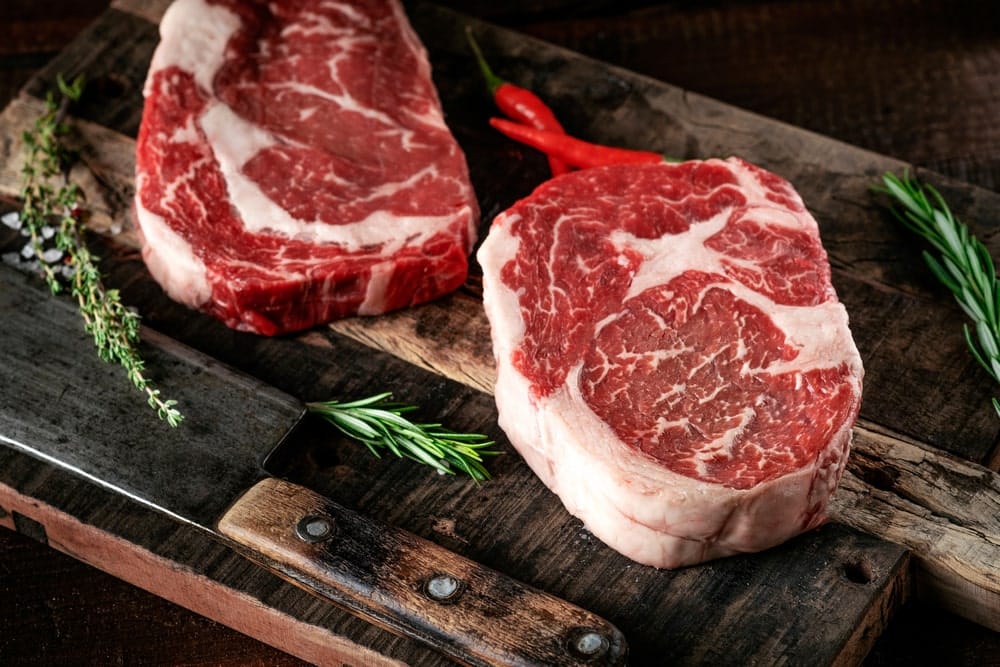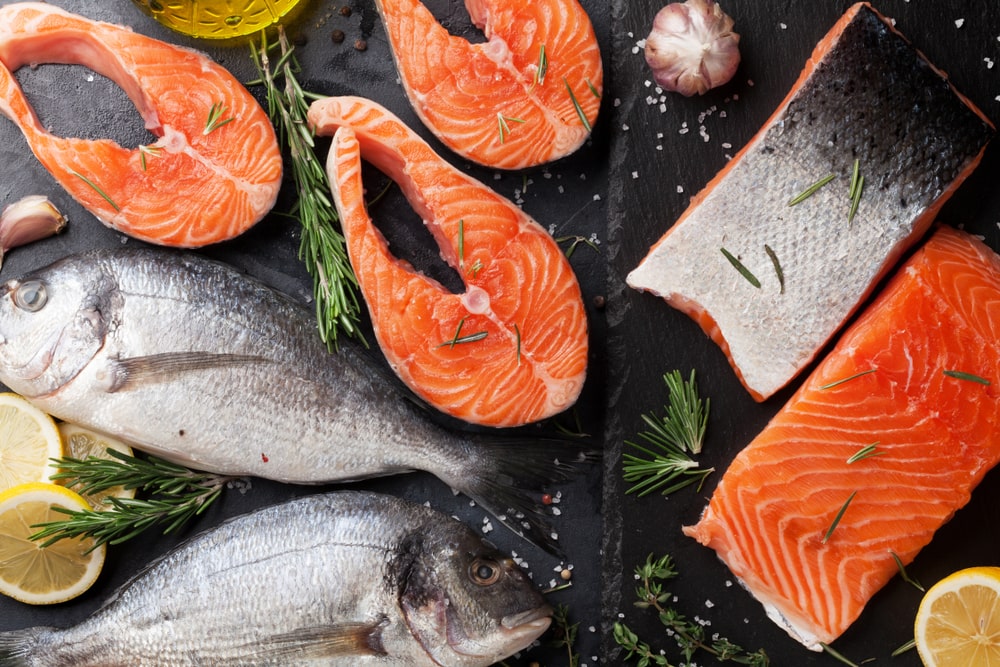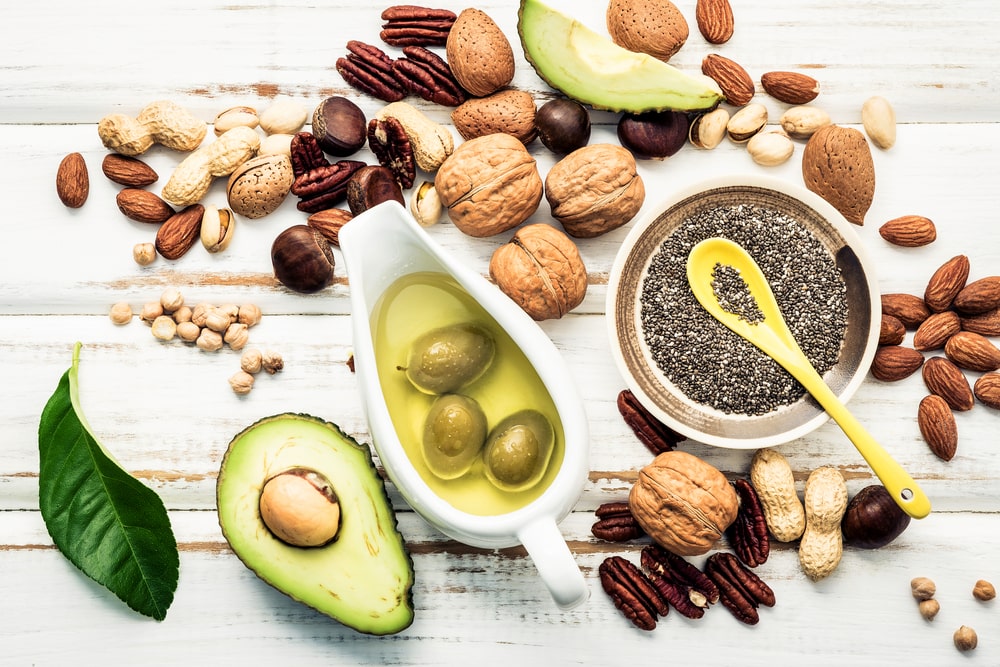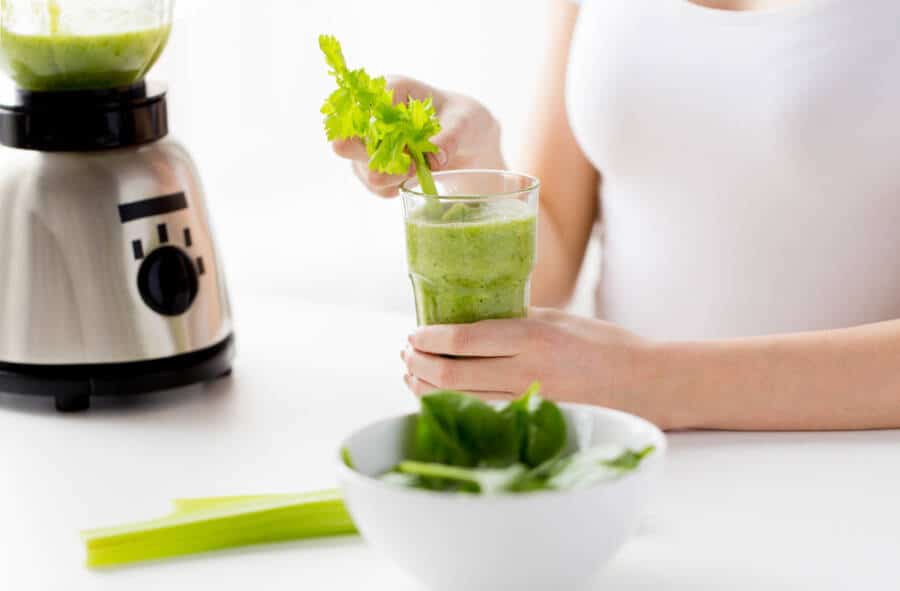Have you considered the benefits of raw food?
Today, The Lasting Health is taking you on a journey into the delicious world of raw foods! We’ve decided to uncover the most irresistible treasures to revolutionize your plate and liven up your taste buds. Why raw foods?
Well, they’re nature’s gift, chock-full of nutrients and flavor, and they’re just waiting to be savored. Integrating these raw delights into your daily meals treats your palate and nourishes your body from within.
Whether you’re munching on crunchy veggies or pampering yourself with succulent fruits, each bite celebrates vitality and freshness.
So, say goodbye to dull meals and hello to a rich culinary experience! Get ready to embrace the magic of 12 raw foods and unlock a world of health one delicious bite at a time.
Keep reading to discover the wonders of raw foods!

Steak
Eating raw meat like steak tartare and beef carpaccio is becoming more and more popular. But some folks are still wriggling with this raw food. When in doubt, like most things you pay good money for, leave it to a well-seasoned chef to prepare it. They’ll use high-quality meat.
Blueberries
You probably already know that blueberries are really healthy for you. But did you know exactly how healthy? This raw food is packed with powerful antioxidants known as flavonoids. Eating them raw guarantees you get all the benefits this delicious fruit offers.
A study from 2014 in the Journal of Agricultural and Food Chemistry discovered that processing blueberries through cooking, baking, or proofing (when dough rises before cooking) reduces polyphenol levels.
Lentils
Sprouted lentils are a fantastic source of protein that can be eaten as a raw food. To do this, though, they must be sprouted by being left to soak overnight.
Once they’ve been washed, rinse the lentils well and place them in a sprouting jar for 2-5 days, rinsing twice daily until little tails emerge.
Broccoli
You might have been encouraged to eat your broccoli as a child, but you probably weren’t told that it’s better to eat it raw rather than cooked.
Broccoli contains high doses of an antioxidant compound called sulforaphane, which might help prevent type 2 diabetes, cancer, depression, heart disease, inflammation, and more harmful health conditions.
A study from 2008 in the Journal of Agricultural Food and Chemistry discovered that our bodies soak up sulforaphane faster when we eat broccoli raw rather than cooked.
A different study from 2009 found that cooking this vegetable in various ways, including boiling, microwaving, and stir-frying, lowered its vitamin C levels.
But if you can’t stand the idea of raw broccoli, try steaming it. That cooking method had the most negligible effect on nutrients.
Squash
Winter squash can also be consumed as a raw food. Butternut squash can be sliced into layers in ravioli or a raw lasagna. It can be blended or spiralized as a raw alternative to pumpkin puree for a raw pumpkin pie or even in a delicious smoothie.
Red bell peppers
Roasted peppers are a swift, easy addition to any meal. But you might just want to eat this veggie raw. Among the foods that strengthen your immune system the most, red bell peppers are a fantastic source of vitamin C.
They contain nearly triple the amount of an orange, and heat can destroy this essential nutrient. But that’s not all.
A few studies published in 2015 in the journal Antioxidants revealed that red bell peppers also have more antioxidants than any other pepper, giving them superpowers in regards to protecting you against the kind of oxidative damage to cells that lead to Alzheimer’s, cancer, diabetes, and another disease.

Fish
The best way to eat raw fish is if it’s been frozen because this technique ensures that any parasites have been destroyed. Just refrigerating this raw food before eating it is risky because the parasites live in an aquatic environment and can survive in your fridge.
If you need some inspo, ceviche and sushi are the most popular raw fish-based meals.
Onions
Onions are loaded with health advantages, including some significant cancer-fighting benefits, thanks to their high concentrations of the flavonoid quercetin. When consumed raw, you maximize this vegetable’s cancer-fighting properties, according to nutritionists.
Cooking them decreases the benefits of the phytochemicals in onions that fight cancers. Furthermore, onions are part of the allium family of veggies and contain antiplatelet agents that can stop cardiovascular disease.
A study in the Journal of Agricultural and Food Chemistry discovered that when raw onions were cooked in an oven, those heart-healthy properties completely vanished in 30 minutes or less, depending on whether the onions were quartered, whole, or crushed.
Pineapple
Grilled pineapple might be an exotic extra to a barbecue menu, but cooking this sweet and tangy tropical fruit can deprive you of essential health benefits, according to experts.
A study printed in Inflammatory Bowel Diseases revealed that fresh pineapple juice was much more effective at reducing colonic neoplasia and inflammation in mice with colitis than boiled pineapple juice.
Researchers attribute this to the fresh juice’s increased levels of the enzyme bromelain, which helps decrease swelling. Since the study was conducted exclusively on mice, the findings are deemed preliminary.
But, a review of studies published back in 2017 in the Journal of the Pakistan Medical Association indicates that bromelain might be as effective an anti-inflammatory as non-steroidal anti-inflammatory drugs, only with fewer side effects.
Garlic
Just like onions, garlic, among the antisocial foods you should eat regularly, is an allium vegetable that also contains antiplatelet agents. But this means its properties that fight cardiovascular disease are also affected by warmth.
A study from the Journal of Agricultural and Food Chemistry discovered that heating garlic at 392 degrees for a few minutes wholly suppressed antiplatelet activity in uncrushed garlic and significantly lowered it in crushed garlic.
Among the other incredible health benefits of using raw garlic, Research shows that heat inactivates the alliinase enzyme.
Boiling garlic for 20 minutes resulted in completely suppressing antibacterial activity, and only one minute of microwave heat destroyed 100% of its cancer-fighting ability.
Crushing garlic and letting it sit for 10 minutes before heating it partially restored its anticarcinogenic power. But the cooked garlic was still 30% less potent than raw garlic.
Beets
This might come as a surprise to some, but yes, beets can be eaten raw. In fact, they’re frankly a bit healthier for you that way. Beets are loaded with healthy nutrients, including five essential vitamins, iron, calcium, potassium, and protein.
They also have high levels of folate and fiber, which are forms of vitamin B9. But, cooked beets forfeit 25% of their folate and other vitamins and minerals, says a registered nurse in NYC and founder of Remedies for Me.
Try shaving the root veggie onto your salads for a touch of color, or create your own raw beet salad with other raw veggies or citrus fruit.

Oils and fats
Those who have ever been on a raw food diet already know that it tends to be low in fat. Some bypass oils entirely. Depending on the variation, here are some fats that can be part of a raw diet.
Avocados
Raw coconut butter
Raw coconut oil
Chia oil
Cold-pressed extra virgin olive oil
Raw flaxseed oil
Raw hempseed oil
Nut butters
Nuts
Seed butter
Seeds
Have you ever tried a raw food diet? Be sure to share your thoughts with us in the comments section below. And if you found this article helpful, we also recommend reading: 10 Miraculous Disease-Fighting Foods You’re Missing Out On






One Response
This is a very helpful and informative article. I knew cooking (heat) distorts the natural property of raw foods but I did not realize by letting garlic sit you can persevere some benefits. I would not have thought to shave beets on a salad.